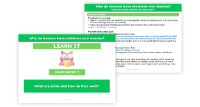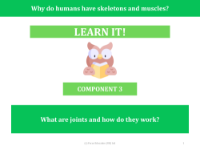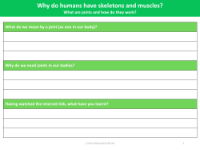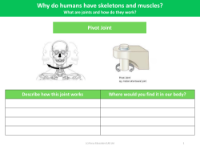What are joints and how do they work? - Teacher notes

Science Resource Description
Joints are crucial components of the human body that enable movement and flexibility within our skeletons. Unlike a rigid structure, our skeletons are made up of various moveable parts due to the presence of different types of joints. These joints are essential for the wide range of motions we perform daily, from walking and running to grasping and lifting objects. To help pupils understand the concept of joints, they are encouraged to explore educational resources that provide visual and practical examples of how joints function in our bodies.
Among the types of joints discussed are the ball and socket joint, the hinge joint, and the pivot joint. The ball and socket joint can be exemplified by a golf ball resting on a tee, illustrating how this type of joint allows for rotational movement in multiple directions, much like the hip and shoulder joints in our body. The hinge joint is similar to the mechanism of a door opening and closing, demonstrating the movement in one plane, which can be observed in our elbows and knees. Finally, the pivot joint, found in the neck, allows for the rotation of the head, enabling us to look around, and is also present in our wrists. Pupils are given the opportunity to work with a partner to locate and understand the significance of each type of joint, thereby appreciating their importance to our bodily functions.





